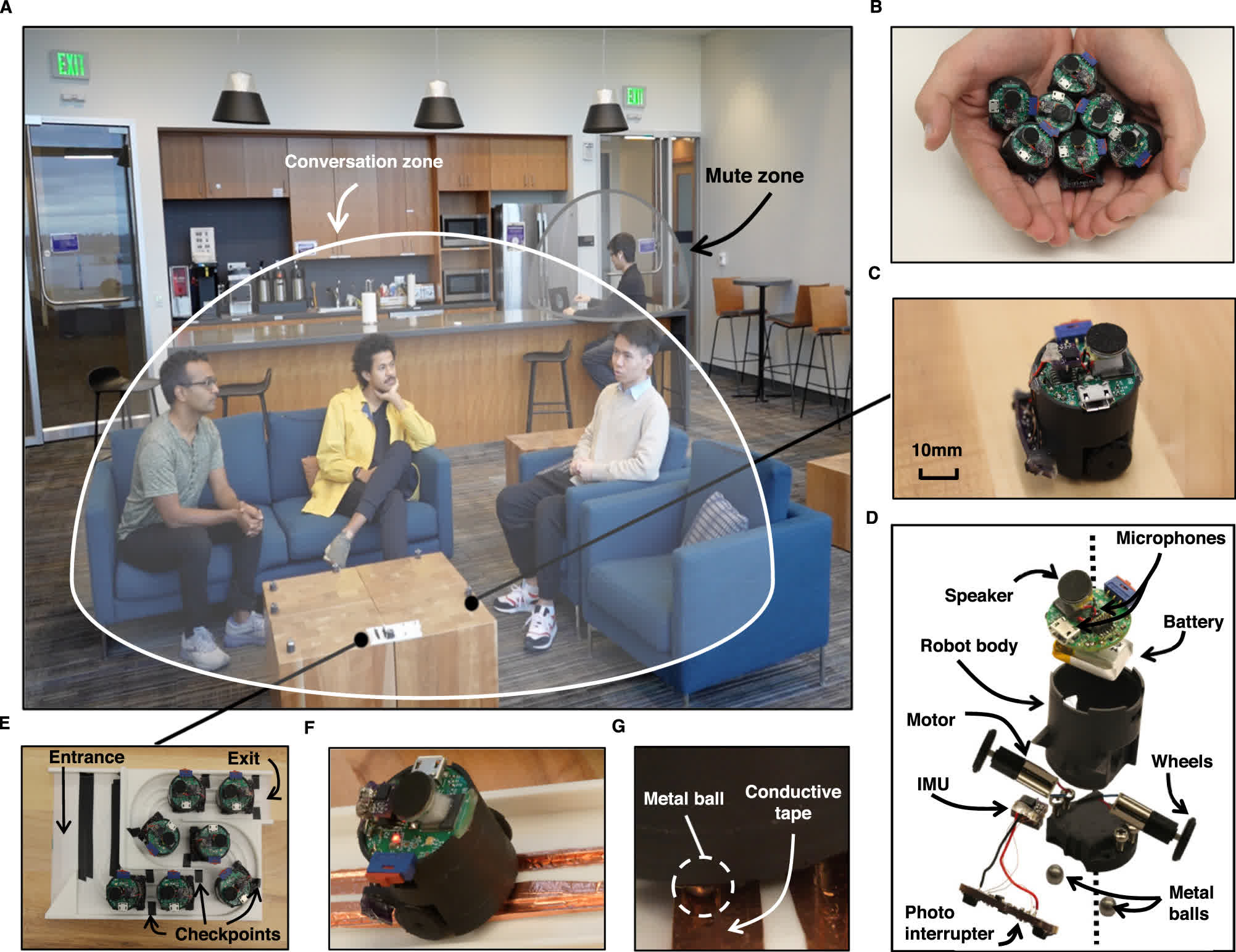Forward-looking: Holding conversations in a crowded area can be difficult, and people have long sought methods to filter individual speakers or groups. A group of researchers recently demonstrateda system using remote robots, which they hope will eventually be able to mute or isolate different parts of a room.

A new research paper outlines a device that automatically distributes small speakers around a limited space to locate and identify individual speakers. The technology could theoretically isolate speech or enhance smart home systems.
The researchers from the University of Washington describe a swarm of seven robots, each about an inch wide, which can move across a table or countertop while tracking each other and a few people with a neural network. They work using included microphones, speakers, gyroscopes, wheels, and other components without using cameras.

Instead of utilizing visual information, the robots communicate with each other through Bluetooth, high-frequency chirps, and audio detection timing while avoiding obstacles and edges via photointerrupters (a kind of optical switch). Staying as far away from each other as possible, the remote speakers work by registering when the same sound wave reaches each one. Furthermore, they can recharge by automatically returning to their base station when their batteries run low.
Testing shows the swarm can accurately identify between three and five individuals in settings like offices, living rooms, laboratories, and kitchens around 90 percent of the time within 50cm (1.6ft). The system can differentiate between people with similar voices and doesn't need to know the number of speakers beforehand. Additional robots would improve the results, but Bluetooth bandwidth limits the maximum to seven.
The result is a connected array of wireless speakers that automatically adapts to its setting. If future iterations can move across floors and cover entire rooms, they could enable interesting applications for meeting rooms, smart homes, and other environments.
By blocking or filtering certain sounds, the speakers could allow groups at neighboring tables in a restaurant to converse privately without overhearing each other. Associates closely collaborating in a meeting space or common area could mute the rest of the room while hearing each other clearly. A user could set a smart home speaker to only receive commands from users standing in specific locations to minimize accidental activation.